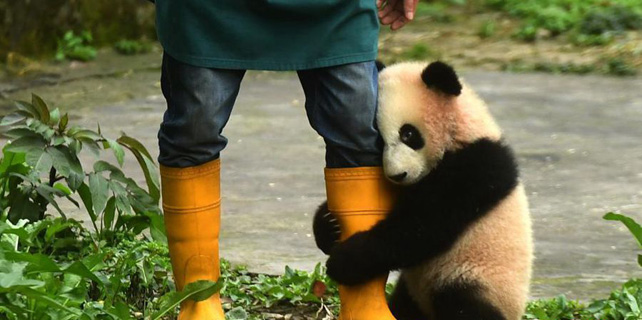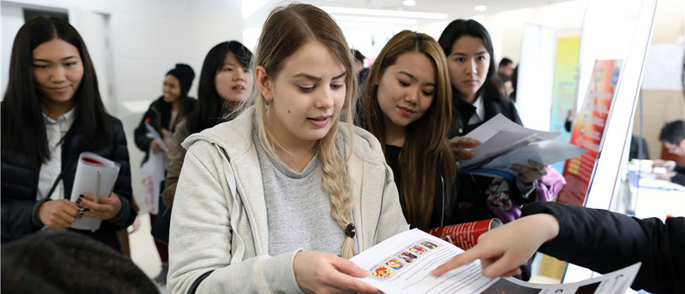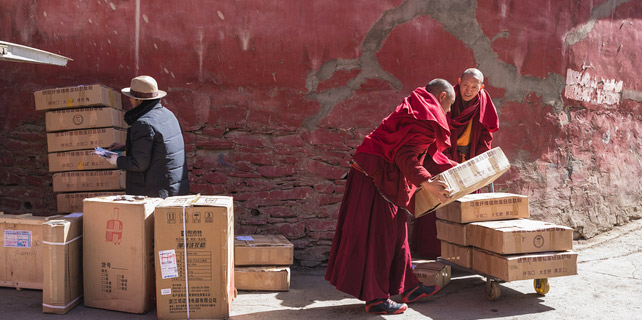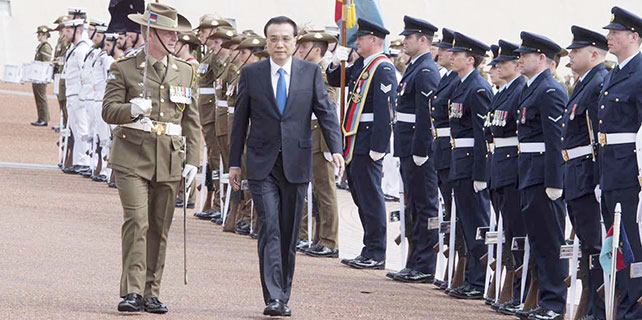Barbie the role model
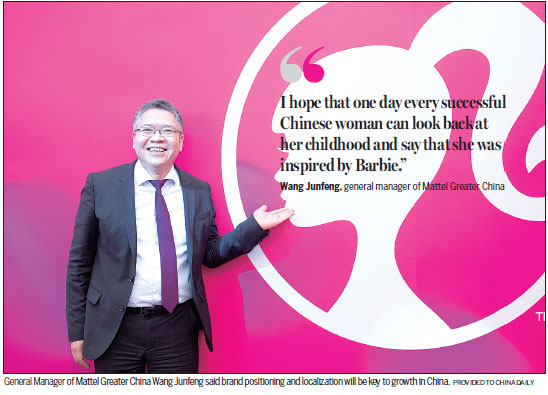
Mattel, the world's largest toy maker, is aiming to wrest a larger share of the Chinese market by positioning its iconic fashion doll as a beacon of inspiration for children and adapting their products to local preferences
Like many of his peers born in 1970s China, Shanghai native Wang Junfeng grew up in a "toy-less era" where he had to play with whatever nature had to offer.
Today, as the general manager of Mattel Inc Greater China, Wang wants to make toys an integral part of a child's development. More specifically, he wants the iconic Barbie doll to be a source of inspiration for girls all over China.
"I hope that one day every successful Chinese woman can look back at her childhood and say that she was inspired by Barbie and her belief that people can become anything they want in life," said Wang, prior to the launch of the brand's largest campaign in China in recent years on March 16.
Endorsed by 20-year-old Chinese actress Guan Xiaotong, a child star who stands out both in school and on the stage, the "You Can Be Anything" campaign was attended by more than 100 Barbie fans and their parents who got to witness the Oriental Pearl TV tower in Shanghai light up in iconic Barbie pink during the event.
"We are incredibly proud of what we - both Mattel and Barbie - have achieved in the past couple of years in China, and we want to keep up the momentum," said Wang, who was appointed as deputy director of the China Toy and Juvenile Products Association in 2015.
According to Wang, the average annual growth rate of China's toy industry hovered around the 8 percent mark last year. The growth of Barbie and Mattel in China, on the other hand, was four times higher.
One of the major factors driving growth was not the toy itself, but the procurement of the American brand's intellectual property rights. In 2016, the image of Barbie was licensed to more than 20 product categories, including kidswear, bicycles, stationery and even mooncakes during the Mid-autumn Festival.
"Barbie is an American-born character. In order to bridge the gap between the two cultures, we want to be as integrated into Chinese kids' daily lives as possible, even during the most traditional festivals," said Wang.
Dubbed the "Chinese father of Barbie", Wang was the first employee at Mattel China and was largely responsible for introducing and popularizing Barbie in the country. He recalled how his team in China was surprised to learn that Barbie had already been a household name in China in 2001, the year the toy was introduced to the country. The company sold more than 10,000 dolls that year.
In 2009, Mattel opened its first Barbie concept store on Shanghai's bustling Huaihai Road. The all-pink, six-story castle covered 3,600 square meters and sold more than 1,600 types of products ranging from dolls, clothing and accessories. There was even a restaurant and a beauty center located within. The store closed down just before its two-year anniversary, igniting as much discussion as when it first opened.
Wang suggested that the concept store will not make a comeback, because it had already fulfilled its mission of increasing brand awareness among Chinese consumers.
According to consulting firm Euromonitor International, the Chinese toy market will be worth 100 billion yuan ($15.36 billion) by 2017. It also projected that the Asia Pacific will outperform North America in sales.
However, Mattel still has room for growth as the Chinese market is presently dominated by domestic toy brands. The brand's market share in 2014 was 1.3 percent, the fourth largest in the country, according to Euromonitor.
Experts believe that the toy industry in China is poised to enter another golden age within the next decade after the government had in 2015 permitted families to have a second child. The average population of newborns in the next few years is expected to hit between 17 and 18 million every year, about five times higher than the United States.
But Wang is not banking on the massive consumer base for growth. Instead, he believes that having the right brand positioning and localizing products will be the key factors in persuading the new generation of Chinese parents to choose Barbie over other toys.
"Chinese parents have a very different approach when it comes to spending money on their kids. They are more ready to spend on things that will increase the child's academic performances," said Wang.
As such, Wang and his marketing team have been focusing on the inspirational aspect of the brand. Another key focus is on licensing the Barbie IP to boost brand exposure. Toys and animation products are one of the pillars in the global licensing industry.
A report released by Charles M. Riotto, chairman of the Licensing Industry Merchandisers' Association, at the sixth China Licensing Summit in October 2016, showed that China's licensing industry generated $7.61 billion dollars in revenue in 2015, the fifth highest in the world behind the US, Britain, Japan and Germany.
xujunqian@chinadaily.com.cn







